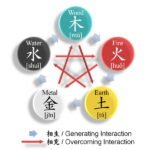 |
During the Three Kingdoms Period, headgear served as a symbol of status Goguryeo (고구려) Jeolpung (절풍) – A winged cap decorated with bird feathers (조우관, 鳥羽冠), worn by warriors and nobles. Feathers indicated rank; higher-status individuals used golden or jeweled feathers instead of natural ones Depicted in Goguryeo tomb murals (e.g., Anak Tomb No. 3 Sogol (소골) – A leather or fabric cap, sometimes paired with metal ornaments. Baekje (백제) Ceremonial Caps with Wings (조우관) – Worn during royal ceremonies but not in battle, as recorded in the Zhou Shu (주서) Featured detachable wings made of metal or feathers. Gold Crowns – Similar to Silla’s but with floral motifs (e.g., lotus patterns) Silla (신라) Gold Crowns (금관) – Elaborate tree-shaped designs with jade ornaments, symbolizing sacred trees or lotus flowers (e.g., Cheonmachong Crown). Used stand-up ornaments (입식) resembling branches or wings. Bird-Feather Adornments – Some caps had metal wings instead of real feathers Gaya (가야) Simpler Metal Caps – Influenced by both Silla and Baekje, often with geometric patterns. Cultural Significance Status Markers: Feathers, gold, and jade distinguished nobles from commoners. Religious Symbolism: Lotus and tree motifs (e.g., Silla crowns) reflected Buddhist and shamanistic beliefs. Religious Symbolism: Lotus and tree motifs (e.g., Silla crowns) reflected Buddhist and shamanistic beliefs. Archaeological Evidence Goguryeo: Tomb murals (e.g., Jangcheon Tomb) depict feathered caps. Silla: Gold crowns excavated from Hwangnamdaechong Tomb reveal advanced metalwork. Baekje: King Muryeong’s Tomb yielded silver cups with lotus designs, hinting at royal headgear motifs submitted by /u/Extension_Age2002 |
Related Posts
Latest News from Korea
- Samsung, SK Hynix join OpenAI’s $500 bn Stargate project with HBM supply pactsSamsung Electronics Chairman Lee Jae-yong (left) shakes hands with OpenAI CEO Sam Altman after signing a letter of intent (LOI) to cooperate in building a global AI infrastructure Samsung Electronics Co. and SK Hynix Inc., the world’s two largest memory chipmakers, have agreed to strengthen collaboration with OpenAI Inc., positioning themselves at the center of a $500 billion project to… Read more: Samsung, SK Hynix join OpenAI’s $500 bn Stargate project with HBM supply pacts
- Doosan emerges as frontrunner to acquire SK SiltronDoosan Corp. is the holding firm of Doosan Group Doosan Group has emerged as the leading candidate to acquire SK Siltron Co., the world’s third-largest semiconductor wafer producer, in a deal that could reshape Doosan’s industrial portfolio. If successful, the deal would also mark its biggest strategic pivot since its landmark takeover of Doosan Bobcat in 2007. According to people… Read more: Doosan emerges as frontrunner to acquire SK Siltron
- Hahn & Co. tightens grip on SK D&D with $53 mn stake buyoutSK Discovery Co., the intermediary holding firm of South Korea’s No. 2 conglomerate SK Group, is selling its entire 31.3% stake in property developer SK D&D Co. to Hahn & Co. for 74.2 billion won ($52.8 million), accelerating the group’s portfolio overhaul and handing control to the country’s largest private equity firm. In a regulatory filing on Wednesday, SK Discovery… Read more: Hahn & Co. tightens grip on SK D&D with $53 mn stake buyout
- US confirms B-1 visa, ESTA use for Korean engineers after Georgia detentionSouth Korean and US officials discuss visa issuance for Koreans working in the US following the September detention of Korean engineers at the Hyundai Motor-LG Energy battery plant in Georgia The US government has confirmed that South Korean engineers will be allowed to continue to work in the US under short-term business visas, easing concerns over project delays following the… Read more: US confirms B-1 visa, ESTA use for Korean engineers after Georgia detention
- Capitalizing on change: Rise of transitional lendingCyrus Korat, managing partner of DRC Savills Investment Management (Courtesy of DRC Savills) With banks retrenching from real estate under Basel IV, transitional lending is emerging as a resilient financing channel, offering borrowers flexible capital and investors attractive spreads. Transitional lending is a form of debt financing that provides borrowers with critical funds to execute on transitional business plans and… Read more: Capitalizing on change: Rise of transitional lending
Latest Entertainment from Korea
- CORTIS x KPOP NARA bring NYC fansign excitement with poster reveal and exclusive competition event detailsPhoto Credits: BigHit Music. Kpop Nara The energy of New York City is set to rise as CORTIS joins forces with KPOP NARA for a highly anticipated fansign event, making waves among both local and international fans. The official announcement comes with the release of a bold and stylish poster, setting the tone for an unforgettable gathering that bridges the… Read more: CORTIS x KPOP NARA bring NYC fansign excitement with poster reveal and exclusive competition event details
- IVE Jang Wonyoung Shines in ELLE Korea x Kérastase October 2025 Pictorial: Stylish Elegance Meets Modern SophisticationPhoto Credits: ELLE. Korea Kerastase Starship Entertainment IVE’s Jang Wonyoung graces the October 2025 issue of ELLE Korea in a stunning collaboration with luxury haircare brand Kérastase, offering a captivating preview of a pictorial that blends sleek style with radiant elegance. The shoot captures Wonyoung’s evolution from idol to fashion muse, featuring polished looks that highlight both her youthful charm… Read more: IVE Jang Wonyoung Shines in ELLE Korea x Kérastase October 2025 Pictorial: Stylish Elegance Meets Modern Sophistication
- Libelante Lights Up Seoul on November 1 with ‘BRILLANTE’ Concert – Tickets on NOL Website Now Available for the Rising K-pop Vocal QuartetPhoto Credits: EMK Entertainment Libelante, the talented South Korean four-member vocal K-pop group, is set to captivate fans with their upcoming 2025 concert titled “BRILLANTE” on November 1 in Seoul. Known for their genre-crossing sound and youthful energy, Libelante rose to fame as winners of the male crossover survival show Phantom Singer 4 in 2023 and officially debuted on August… Read more: Libelante Lights Up Seoul on November 1 with ‘BRILLANTE’ Concert – Tickets on NOL Website Now Available for the Rising K-pop Vocal Quartet
- WJSN Soobin Reimagines Idol Fashion: Rolling Stone Korea Issue 15 Pictorial Preview Shines with Timeless Elegance & Exclusive Interview InsightsPhoto Credits: Rolling Stone Korea. Starship Entertainment Pictorial and Fashion Highlights Soobin’s Rolling Stone Korea shoot is a showcase of the singer’s blossoming personal and performance style, blending classic sophistication with the confident spirit emblematic of K-pop icons in 2025. Inspired by the modern youth fashion scene and Seoul’s evolving style narrative, the pictorial features Soobin dressed in sleek tailored… Read more: WJSN Soobin Reimagines Idol Fashion: Rolling Stone Korea Issue 15 Pictorial Preview Shines with Timeless Elegance & Exclusive Interview Insights
- Wooyoung of ATEEZ Channels Parisian Edge in Vogue Korea x COURRÈGES SS26: Inside His Sleek, Sensual Studio PictorialPhoto Credits: Vogue Korea. COURRÈGES. KQ Entertainment ATEEZ’s Wooyoung stars in Vogue Korea’s latest pictorial preview, capturing the essence of COURRÈGES Spring/Summer 2026 in a sultry display of Parisian minimalism and raw K-pop energy. The shoot is a bold meeting of fashion worlds: Wooyoung, one of K-pop’s most dynamic performers, models the sleek modernism of Nicolas Di Felice’s COURRÈGES against… Read more: Wooyoung of ATEEZ Channels Parisian Edge in Vogue Korea x COURRÈGES SS26: Inside His Sleek, Sensual Studio Pictorial
Learn People & History of Korea
- The Evolution of Busan: A Historical Journey Through South Korea’s Second Largest Metropolitan CityAncient Beginnings: The Founding of Busan Busan, known as the second largest metropolitan city in South Korea, has a rich history that dates back to ancient times. The earliest recorded existence of Busan can be traced to the Goryeo Dynasty, where it was referenced as a vital coastal settlement. Its strategic location along the southeastern coast of the Korean Peninsula… Read more: The Evolution of Busan: A Historical Journey Through South Korea’s Second Largest Metropolitan City
- The Evolution of Pyongyang: A Journey Through History, Economy, and Political DynamicsIntroduction to Pyongyang Pyongyang, the capital city of North Korea, serves as a prominent symbol of the nation’s history and culture. Geographically located on the banks of the Taedong River, in the southwest part of the country, Pyongyang is situated within a strategic area that has historically facilitated trade and cultural exchange. The city’s origins can be traced back to… Read more: The Evolution of Pyongyang: A Journey Through History, Economy, and Political Dynamics
- The Evolution of Seoul: From Ancient Korea to Modern Metropolis and BeyondAncient Beginnings: The Founding of Seoul The city of Seoul, known today as the vibrant capital of South Korea, has ancient roots that trace back to the Three Kingdoms period of Korea, specifically the kingdoms of Baekje and Silla. Evidence suggests that Seoul was originally established as a settlement given its strategic geographical advantages. Nestled within the Han River basin,… Read more: The Evolution of Seoul: From Ancient Korea to Modern Metropolis and Beyond
- Exploring Korean Traditional Games in Squid Game: From Season 2 to Upcoming Season 3Introduction to Korean Traditional Games Korean traditional games have long been an integral part of the country’s cultural landscape, offering more than mere entertainment. These games, which range from simple children’s pastimes to complex community activities, hold significant cultural significance and often serve as a means of preserving history and promoting social interaction. Rooted in centuries of tradition, these games… Read more: Exploring Korean Traditional Games in Squid Game: From Season 2 to Upcoming Season 3
- Unveiling the Past and Present of Saju: The Art of Korean Fortune TellingIntroduction to Saju Saju, a traditional Korean fortune-telling practice, is an intricate art that seeks to interpret an individual’s fate based on their birth date and time. The term “Saju” translates to “four pillars” in English, referring to the four critical components derived from these time markers: year, month, day, and hour. This method holds significant cultural value within South… Read more: Unveiling the Past and Present of Saju: The Art of Korean Fortune Telling















